What to feed baby cichlids
5 Best Food for African Cichlids Fry
African Cichlids look amazing and they are also easy to breed. No wonder so many fish enthusiasts are interested in breeding them and raising up their fry.
It is often the easiest part to get a cichlid male and a female to mate. Once the fry are free swimming, you really need to ensure the best water conditions for them.
Furthermore, you need to make sure they are not going to be bullied or eaten by other fish.
These two factors are really important, but there is another one that is actually going to be the topic of this article.
After you have set the right conditions for them to grow up, you need to feed them healthy and nutritious food day by day.
Since they are so tiny, you can’t just give them the regular fish food you give to your other fish. You either need to crush those flakes to even tinier pieces or buy commercial food specifically made for fish fry.
Keep on reading if you want to find out more about the best foods for African Cichlid fry available in the market!
Best Food for African Cichlid FryThe first thing you need to look at on a commercial fish food box is the list of ingredients. This is an important step towards ensuring the healthy growth of your little pets.
The commercial food you buy should contain a wide range of proteins and vitamins that are appropriate for fish babies.
There are many fish foods to choose from even in your local pet store, not to mention the abundance of brands available on the internet.
Costs, reviews and ingredients might vary and it can quickly get confusing. But that’s why we have wrote this article.
We are here to narrow it down for you a bit and show you our reviews of the best foods for African Cichlid fry in our opinion.
The bites and flakes we are about to show you are all top-quality and many fish keepers use them to feed their own fry. Let’s see what these brands have to offer for your fish!
1. Northfin Fry Starter
One of the simplest high-quality foods you can get is the Northfin Fry Starter. What makes it simple is that it’s made entirely of Antartic Krill.
There is a wide range of nutrients that can be found in this type of krill. These include amino and fatty acids, vitamins, minerals, chitins and phospholipids.
The abovementioned ingredients will all contribute to the growth and well-being of your African Cichlid fry.
There is also some Astaxanthin in it which plays a huge role in bringing out the bright colors of cichlids. Depending on how many fry you want to feed, you can choose from the 50 g and the 250 g packages.
Since the Northfin Fry Starter has an expiration date, the 250g package is simply too much in some cases.
With this formula, you can feed them up to 3 times a day giving them a portion they can consume in about 2 minutes.
Pros
- It is the type of formula your fry will get excited to eat
- You can give the leftovers to the adults, they are going to love it
- It consists of fine particles that fit easily in their mouth
- Ideal for fry that swim near the bottom
Cons
- Unpleasant fishy smell after opening the package
- It is in powder form and can contaminate the water if not consumed
Buy on Amazon »
2.
 Hikari Tropical First Bites
Hikari Tropical First BitesHikari Tropical First Bites is a straightforward first food you can give to your African Cichlid fry.
What they did is they produced nutritious fish food in powder form and then covered it with a coating that holds it together.
It is outstanding for little baby fish because you need to give them a small amount.
This fish food will not only make your fry grow faster but also protect them from diseases in the long run. It also does a great job bringing out the beautiful colors of your cichlids.
At the beginning, it will require a bit of experimenting until you get used to feeding your fish small enough portions.
But once you figure it out, you only need to give them the same portions each day. It contains a wide range of nutrients that will ensure the rapid growth of your fry.
The great thing about the coating they have applied to it is that it preserves the nutritional value of the powder.
Pros
- Lasts longer than many other fish foods
- Your fish will grow rapidly and flourish in bright colors
- Coated micro pellets that take more time to dissolve
- It slowly spreads in the water
Cons
- Going to be hard to feed the right portion
- It is too much for a small group of fry
Buy on Amazon »
3. Seachem NutriDiet Cichlid Flakes
The Seachem NutriDiet is a great option if you want to mix up the diet of your African Cichlid fry a little bit.
When it comes to cichlids, there is definitely no need to think twice about giving them frozen foods. This food is going to be a treat they will be excited about.
It not only gives them a boost of energy but also strengthens their immune system.
If you are looking for something extra in addition to the fish food you typically give to your fry, then this is the one you need.
The Seachem NutriDiet contains a huge variety of nutrients that will help your little African Cichlids grow.
The best thing about it is that it contains vitamin C, which will help them build up an indestructible immune system.
By stimulating their appetite, they will consume more food and thus grow faster. In the meanwhile, you also keep them healthy and full of energy by feeding it to them.
Pros
- Contains all the vital nutrients that cichlids need
- Gives a huge boost to their immune system with Vitamin C
- Probiotics that completely prevent digestive problems
- Little to no leftover food
Cons
- It makes the tank water a bit gloomy over time
- Strong color enhancing effect that can look artificial
Buy on Amazon »
4. New Life Spectrum Grow Fry Starter
New Life Spectrum is easily among the brands that produce the highest quality fish foods in the market.
They use only those ingredients that are actually good for your fish and help them grow. Your fish babies are going to love it and it will be a delight to see them thrive on such a healthy diet.
Experienced fish keepers know that for small freshwater fish, this one is one of their best options. It is basically a powdery fish food that easily spreads around in the water.
This will make it easier for every single one of your African Cichlid fry to eat.
What makes it a perfect first food is the fact that it is in powder form. You can start to feed it to newborn fish without hesitation.
It also contains an incredibly huge amount of protein which is important for your fish to thrive.
Pros
- Contains a huge amount of protein
- Practical for baby fish because of its powder form
- Accelerated nutrient absorption and easy digestion
- Gives an extra energy boost to your fish fry
Cons
- Overfeeding will cause the water to be contaminated quickly
- Not every fish finds it tasty despite it being nutritious
Buy on Amazon »
5.
 Ocean Nutrition Cichlid Veg Flake
Ocean Nutrition Cichlid Veg FlakeThis veggie flake from Ocean Nutrition provides you a straightforward way to feed your little African Cichlids.
Your cichlid babies are going to absolutely love this food thanks to its attractive flavor. Including some vegetable-based food is just as important as feeding them protein-rich live foods.
These flakes contain a wide range of vitamins that are all essential for a growing little baby cichlid. The pieces are also small enough to fill in their mouth.
The long-term effects of this veggie flake are vivid colors and lots of energy for your fish throughout the day.
It is especially great for those fish that swim in the upper layers of the tank because most of the flakes are going to float on the surface.
The fresher the flakes are, the more delicious they are going to be for your fry. This is why we recommend you to buy the smaller package. Unless you have lots of baby cichlids, of course.
Pros
- Cichlids absolutely love the taste of it
- High-quality and full of nutrients that facilitate growth
- Makes your fish flourish in its beautiful colors
- A great resource of energy for your African Cichlids
Cons
- The leftovers might cloud your fish tank
- It is a bit too powdery for juveniles
Buy on Amazon »
When do African Cichlid Fry Start Eating?
When the spawning is complete, it is best to remove the fry from the adults and start feeding them.
This is only possible when the female stops carrying them in her mouth and they become free swimming.
There are methods to force her to release them early but it really depends on how fast you want it to happen.
In the first few days, they are not going to be hungry because the leftovers of their yolk sac are a good source of nutrition.
Once they have consumed it all, you can start feeding them. Even if you would try feeding them during that period, it would only cause the water to be contaminated.
Even if you would try feeding them during that period, it would only cause the water to be contaminated.
The food is simply not going to be eaten while the yolk sacs are there. After that, you can start feeding them any of the foods that we reviewed in this article.
They are all small enough to fit into their mouth and full of nutrition.
How Often to Feed Cichlid Fry?
African Cichlid fry should be fed two or three times a day. Just give them a portion that they can consume in about two minutes.
No more and no less. If you give them more, it will greatly decrease the water quality. If you give them less, they are not going to grow as quickly as they should.
Besides feeding them one of the protein-rich fry foods we talked about in our list, you should give them live foods as well.
You can do so by mixing two or three different types of foods together and feeding it to them at once. For some commercial foods, it might take you some time until you figure out the portions.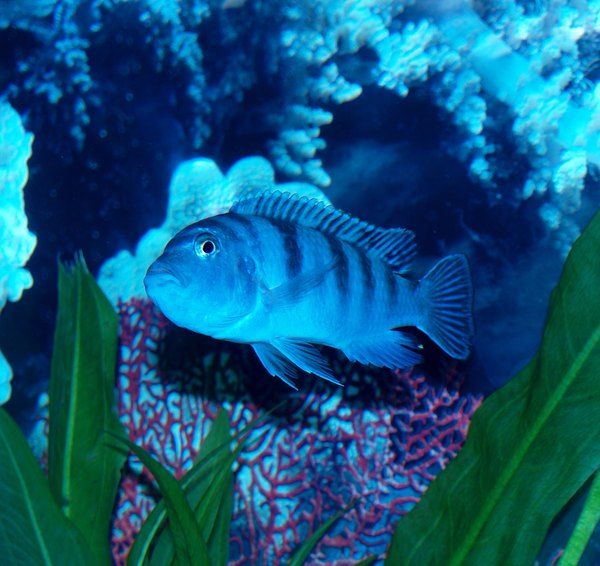
Live Food to African Cichlid Babies
When it comes to live foods, brine shrimp and infusoria are your two main options. These contain all the nutrients your fry needs in order to thrive.
Make sure the read the description on the commercial food you want to buy for your fish.
If it contains the required vitamins and proteins for them to grow, then you might not even need to feed them live foods.
But still, feeding them the same food day by day is rather boring and they are not going to be very excited the umpteenth time.
This is why you should mix things up and include some live foods and frozen foods besides the flakes and powdery foods we reviewed.
You need to wake up their scavenging instinct every now and then.
Conclusion
Once you have one of the best African Cichlid foods at hand, it is going to be a rewarding experience to start raising your fry.
You will be able to follow their growth day by day and see their colors flourish. The foods that we reviewed contain all the nutrition that cichlid babies need in order to thrive.
The foods that we reviewed contain all the nutrition that cichlid babies need in order to thrive.
Therefore, you don’t need to invest time and effort into figuring out how to combine the diet for them.
All you need to do is to get a pack of fish food from our list, open it and feed them two or three times a day. Now it is up to you to decide which one of these brands will work for you the best.
You can even combine them to introduce some variety into their diet. Hopefully, this article helped you find the best food for your own African Cichlid fry.
How to Raise Cichlid Fry to Maturity
PREVIOUS
ARTICLE
Caring for Freshwater Angelfish Eggs
Breeding freshwater angelfish can be a rewarding experience but raising the eggs to maturity may be a challenge.
NEXT
ARTICLE
Tips for Breeding Silver Dollar Fish
Silver dollar fish are a great addition to the community tank and breeding them can be a fun challenge.
CAN YOU KEEP OTHER FISH WITH YOUR BETTA?
The betta fish is an incredibly popular species that has a reputation for being aggressive.
COMMON MYTHS ABOUT BETTAS
Discover five common myths about the beautiful betta freshwater fish.
AFRICAN CICHLID AGGRESSION - HOW TO REDUCE AGGRESSION
Learn about the causes of cichlid aggression and methods for reducing it.
FRESHWATER AQUARIUM ARTICLES
BREEDING
Breeding aquarium fish can be a challenge unless you are equipped with the proper knowledge. The articles in this category will help you to succeed in breeding your aquarium fish.
How to Raise Cichlid Fry to Maturity
Breeding freshwater aquarium fish can be a rewarding but challenging experience.
Tips for Breeding Gouramis in the Home Aquarium
Gouramis are some of the best community fish around because they are peaceful, hardy, and lovely to boot.
Tips for Breeding Discus Fish
Discus fish are one of the most colorful species of freshwater aquarium fish and they can be a joy to breed.
The Top 5 Tetras for Breeding in the Home Aquarium
Breeding aquarium fish can be tricky, but with the right tank setup and preparation it can be done.
Breeding Mouth Brooding African Cichlids
Learn how to succesfully breed mouth brooding African Cichlids.
Tips for Breeding Silver Dollar Fish
Silver dollar fish are a great addition to the community tank and breeding them can be a fun challenge.
The Basics of Breeding Bala Sharks
Bala sharks are a very popular species of aquarium fish.
Caring for Freshwater Angelfish Eggs
Breeding freshwater angelfish can be a rewarding experience but raising the eggs to maturity may be a challenge.
Breeding Freshwater Fish
Learn how to succesfully breed freshwater fish.
Breeding and Rearing Live-bearing Species of Fish
Live-bearing species of fish like guppies and swordtails are notorious for breeding in the community tank.
Breeding the Two Kinds of Betta Fish
You may be aware that there are over 30 species of betta fish in existence but did you know that these species can be divided by their breeding habits?
Read more articles (11)Aquarium Setup (16)
What is an Unfiltered Tank and How do I Cultivate One?
An unfiltered tank is a unique challenge - you will learn the basics for how to get started in this article.
An Overview of Fish Bowls
An overview of keeping fish in a fish bowl.
All About Tropical Fish Tanks
An overview of tropical fish tanks, what they are, and the pros/cons of keeping one.
Wall Mounted Fish Tanks
Advantages and disadvantages to a Wall Mounted Fish Tank.
Acclimating Fish - Drip Method
Learn how to properly acclimate your fish to your aquarium using the drip method.
Cultivating an Amazon Biotope Tank
If you are looking for a challenge, consider cultivating an Amazon biotope tank.
Cultivating a Healthy Discus Community Tank
Discus fish are a joy to keep in the home aquarium and a discus community tank is even better!
Tips for Aquascaping a Tank for Large Freshwater Fish
Keeping large species of freshwater fish in a community tank can be challenging but, with proper planning, you can be successful.
When and How to Upgrade to a Larger Tank
If you participate in the aquarium hobby for long enough, there may come a time when it becomes necessary to upgrade to a larger tank.
How to Select the Best Location for Your Tank
Before you even begin to set up your freshwater fish tank you need to decide where to put it.
Safety Tips for Freshwater Aquariums
Cultivating a freshwater aquarium can be an enjoyable experience but there are also a number of safety concerns to be aware of when keeping a fish tank.
What is a Biotope Tank?
Take your skills to the next level by starting a biotope tank.
Questions to Ask Before Starting a Freshwater Fish Tank
Before you go out and buy a freshwater tank, think about these questions so you are fully prepared.
Moving - How to Prepare Your Tank for a Move
Moving can be a stressful process but moving your fish tank doesn't need to add to that stress.
How to Select a Tank for a Freshwater Aquarium
If you want to have a thriving freshwater tank, you need to start by selecting the right tank.
FAQs for Novice Freshwater Hobbyists
As a beginner in the aquarium hobby you are likely to have many questions.
Planted Tanks (9)
Diagnosing Problems with Aquarium Plants
Cultivating a thriving planted tank can be a challenge -- this article will help you diagnose the most common problems.
Fish to Avoid for Planted Freshwater Tanks
Cultivating a freshwater planted tank is hard work and the last thing you want is to have all of that hard work destroyed by adding the wrong fish to your tank.
Tips for Rooting, Pruning, and Propagating Live Aquarium Plants
Live plants can completely transform the look of your aquarium.
Aquatic Mosses for Freshwater Tanks
If you like the idea of a planted tank but aren't ready to take on the extra work load, start off small with some aquatic mosses.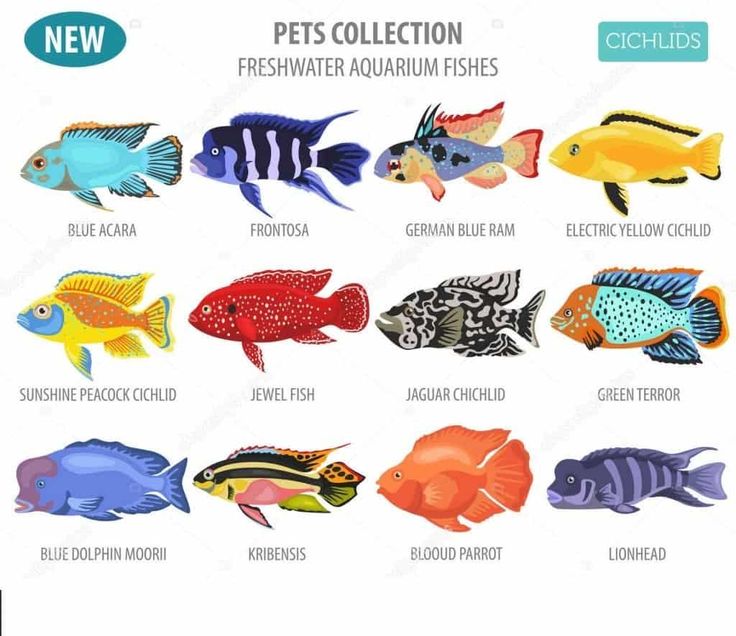
Step-by-Step Guide for Setting Up a Planted Tank
Cultivating a thriving planted tank can be quite a challenge and if you do not follow the proper procedure, you may not be successful.
The Top 6 Species for the Planted Tank
Some freshwater fish will eat their way through a planted tank in a matter of hours.
Introduction to Planted Aquariums
An overview of the different styles of planted aquariums.
The Importance of Carbon Dioxide in Planted Tanks
Maintaining a heavily planted tank may require more than special substrate -- you may also need to supplement your tank's supply of carbon dioxide.
Freshwater Plant Article Database
Articles on different freshwater plants and appropriate care.
Aquarium Lighting (5)
Choosing the Right Lighting According to Tank Size
Aquarium lighting systems come in all shapes and sizes - learn how to choose the right system for the tank size you have.
Understanding the Basics of Freshwater Aquarium Lighting
Selecting a lighting system for your aquarium can be a difficult task.
Understanding the Lighting Spectrum
The key to finding the perfect lighting for your freshwater aquarium is to understand the basics of the lighting spectrum.
Types of Freshwater Aquarium Lighting
Choosing the right lighting system for your freshwater tank is a very important decision.
Finding the Right Balance with Aquarium Lighting
Installing the proper aquarium lighting system is essential in maintaining a thriving tank environment.
Heating and Filtration (6)
Properly Aerating Your Aquarium
Learn the basics of aeration and how to properly aerate your aquarium.
Common Problems with Tank Filters
Having adequate filtration is the key to maintaining a healthy freshwater aquarium.
Using Carbon in a Freshwater Aquarium
Learn about the differing points of view and guidelines on using carbon in your aquarium.
Choosing the Right Filtration System for Your Aquarium
Learn about the different types of filters for your freshwater aquarium.
Overview of Filter Media Types
Proper filtration is the key to keeping your freshwater aquarium healthy.
How to Make Your Own Sponge Filter
Sponge filters are a great option for hospital and fry tanks but they can also be used as a source of supplemental filtration for community tanks.
Nutrition and Feeding (7)
Constipation/Indigestion in Aquarium Fish
You may not realize that your fish can suffer from constipation.
How to Culture Infusoria for Baby Fish
To raise baby fish successfully you will need to use the right food.
The Pros and Cons of Live Food for Fish
The type of food you choose to feed your aquarium fish will have a major impact on their health.
Will Algae Wafers Make my Tank Water Cloudy?
If plan to keep bottom feeders or algae eaters in your tank you may need to supplement their diet with algae wafers.
The Top Commercial Foods for Freshwater Fish
The food you feed your freshwater fish will determine their health and vitality.
The Nutritional Needs of Freshwater Fish
The key to keeping your aquarium fish healthy is to offer them a well-balanced diet that meets their nutritional needs.
How to Interpret Fish Food Labels
If you want to select a high-quality commercial food for your aquarium fish you should understand how to interpret a fish food label.
Freshwater Fish Diseases (8)
What is Dropsy and How Do I Treat it?
When cultivating an aquarium, you are likely to run into a variety of freshwater aquarium fish diseases and conditions including dropsy.
Identifying and Treating the Most Common Cichlid Diseases
Cichlids are one of the largest families of freshwater fishes and they are prone to developing several aquarium fish diseases.
Behavioral Changes and Problems in Aquarium Fish
Unexpected behavioral changes are often a symptom of disease in aquarium fish.
How to Set Up A Hospital Tank
No matter how careful you are, your fish are likely to get sick at some point during your time as an aquarium hobbyist.
Improving Color in Aquarium Fish
The best part of keeping a freshwater aquarium is watching your tank inhabitants thrive and grow.
Addressing the Shimmies in Live Bearers
Dealing with aquarium fish disease is a fact of life in the aquarium hobby.
How to Deal with the Top Betta Fish Diseases
Betta fish are some of the most colorful and vibrant freshwater aquarium fish around.
Common Freshwater Tropical Fish Diseases
Learn about common fish illnesses and how to effectively treat them.
Aquarium Maintenance (18)
What to do About Aquarium Snail Infestations
Though they may look harmless, one aquarium snail can quickly turn into dozens or even hundreds.
Properly Maintaining the pH in a Freshwater Aquarium
Learn how about pH and how to properly maintain it in a freshwater aquarium.
Tips for Cleaning and Maintaining Your Tank Filter
Your tank filter is perhaps the most important piece of equipment you have, so be sure to keep it clean as part of your routine maintenance schedule.
Preparing an Aquarium for Your Vacation
Learn how to prepare your aquarium for your upcoming on vacation.
Cleaning Algae off Tank Glass Properly
Algae is a fact of life in the freshwater tank.
Water Testing in Your Freshwater Aquarium
How to test your aquarium's water, and what to look for.
Can a Routine Water Change Kill Your Fish?
We've all seen it - fish die unexpectedly after a water change.
How to Fix Cloudy Tank Water
Cloudy tank water is a common problem in the freshwater aquarium.
How to Make Your Own Tank Divider
There may come a time during your career as an aquarium hobbyist that you need to divide your tank.
Choosing and Conditioning the Water in Your Aquarium
Learn about how to properly choose and condition the water you use in your freshwater aquarium.
Controlling Algae Growth
Algae growth is an incredibly common problem with freshwater tanks.
Tips for Protecting Your Aquarium Against High Summer Temperatures
During the summer months, it may become more of a challenge to keep your aquarium temperature stable.
The Process of Cycling a Fish Tank
What is "cycling" your fish tank?
Fish Tank Maintenance and Cleaning
In order to keep your tank clean and healthy for your fish, you will need to perform some basic daily and weekly maintenance tasks.
Using a Gravel Vacuum in the Home Aquarium
Cleaning your tank is one of the most important parts of home aquarium maintenance.
Freshwater Fishless Cycling
Learn about new methods for cycling your freshwater aquarium without fish.
Summer Precautions for Freshwater Tanks - Keeping Your Tank from Overheating
Keeping the temperature in your tank is extremely important for the health of your fish but it can be a challenge during the hot summer months.
Aquarium Water Test Kits
The key to keeping your aquarium fish happy and healthy is to maintain high water quality.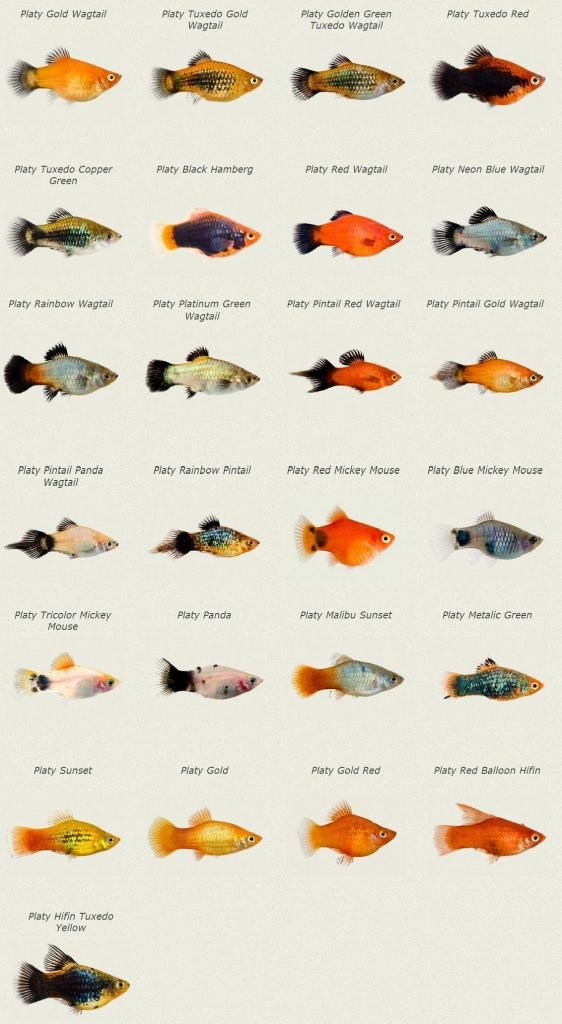
Aquarium Decorations (5)
Choosing a Freshwater Aquarium Substrate
Learn about the factors you should consider when choosing a substrate for your freshwater aquarium.
Adding Rocks and Wood to Your Freshwater Aquarium
Adding wood and rocks to your aquarium can enhance its appearance and make it a better environment for your fish -- learn how in this article.
Aquarium Decorations
Types of decorations.
Selecting a Background for your Freshwater Tank
The way you decorate your tank makes a big difference in its appearance.
Using Driftwood and Live Plants in the Freshwater Tank
One of the most attractive ways you can decorate an aquarium involves a combination of driftwood and live plants.
Stocking the Tank (48)
The Ideal Tank Setup for Oscars
Oscars are a type of cichlid and they are a very amusing species of freshwater fish to keep in the home aquarium.
Everything You Need to Know About Freshwater Angelfish
Angelfish are a species of freshwater cichlid and they are one of the most popular species of tropical aquarium fish.
What Are the Best Cichlids for a Community Tank?
Cichlids are some of the most beautiful fish in the world, but they can also be the most aggressive.
The Top 5 Shrimp for the Freshwater Aquarium
Freshwater shrimp make an excellent addition to your cleanup crew - keep reading to learn more about the top 5 species!
Choosing the Right Algae-Eater by the Type of Algae in Your Tank
There are many different types of aquarium algae and not all algae eaters will eat every type.
African Cichlid Aggression - How to Reduce Aggression
Learn about the causes of cichlid aggression and methods for reducing it.
The Top 6 Freshwater Goby Species for Your Tank
Most of the gobies kept in the home aquarium are saltwater fish but there are still a few freshwater gobies that make excellent additions to the home tank.
Spotlight on the Apple Snail
Also known as the mystery snail, apple snails are a popular addition to the freshwater tank.
Keeping Dwarf Gouramis in the Freshwater Tank
The dwarf gourami is a small but brightly colored freshwater fish that makes an excellent addition to the community tank.
Larger Tetras for the Community Tank
Many tetras are known for their small size and peaceful nature, but there are some larger tetras that can be a good choice for the community tank.
Compatible Tank Mates for Freshwater Angels
Angelfish are one of the most popular species of freshwater aquarium fish.
The Top Choices for Stocking a 10-Gallon Tank
Maintaining a thriving 10-gallon tank can be a challenge but it will help if you are careful about how you stock it.
The Top 10 Worst Community Fish
If you are interested in cultivating a peaceful tank full of multiple species, don't choose these fish.
Everything You Need to Know About Nerite Snails
Looking for an addition to your freshwater cleanup crew?
Jewel Cichlid Species Profile
Jewel Cichlids are a group of brightly colored cichlids from Africa.
Cultivating a Tank for Red Bellied Pacus
The red bellied pacu is a unique and beautiful aquarium fish.
Caring for the Plecostomus in the Freshwater Tank
The plecostomus is one of the most popular species of algae eater for the freshwater tank.
South American Cichlid Species for Beginners
Cichlids are not for everyone, however, and certain species can be quite challenging to keep.
The 15 Most Popular Types of Goldfish
Popular as prizes at carnivals and state fairs, goldfish are known for their orange-gold coloration, but they actually come in many colors and patterns.
Stocking Fresh Water Fish Tanks
Learn how to select the right quantity and combination of fish for your freshwater aquarium.
Care Guide for Keeping Brackish and Freshwater Puffers
The name "puffer fish" conjures an image of a balloon-like animal but these fish are so much more than their comical appearance.
Common Myths About Bettas
Discover five common myths about the beautiful betta freshwater fish.
Corydoras Catfish: Community-Friendly Bottom Feeders
If you are looking for the perfect fish to add to your community tank, consider corydoras catfish.
Species Spotlight: Keeping Freshwater Crayfish at Home
Crayfish can make a unique addition to your freshwater aquarium.
The Most Popular Catfish for Freshwater Tanks
Catfish are an extremely diverse group of fishes and many of them fare well in the home aquarium.
Spotlight on the Otocinclus Catfish
Also known as oto cats, otocinclus catfish are some of the smallest aquarium fish out there and also some of the best algae eaters.
The Natural Environments of African and South American Cichlids
Learn about and how to recreate the natural environments of African and South American Cichlids
Species Profile: Blind Cave Tetra
The blind cave tetra is unique among freshwater aquarium fish.
Stocking Your Tank with Schooling Fish
Adding a school of colorful fish to your tank can take it from drab to fab -- read on to learn more about schooling species.
Choosing the Right Barbs for Your Tank
Barbs are incredibly popular among freshwater aquarium hobbyists and there are a number of species to choose from.
Tips for Keeping Shoaling Species in the Aquarium
Nothing makes an aquarium stand out like a large shoal of colorful fish.
Species Spotlight: Keeping Arowanas in the Freshwater Tank
The Arowana is a very large but graceful fish that makes a very interesting freshwater tank inhabitant.
Species Spotlight: Archerfish
Looking for a unique species to add to your tank?
Show Tank-Worthy Tankmates for Fancy Guppies
Everyone knows that guppies are some of the most colorful freshwater fish while also being some of the easiest to care for.
The Basics of Freshwater Fish Compatibility
Whether you are new to the aquarium hobby or not, there are a few things you should know about freshwater fish compatibility.
The Top 10 Worst Tank Busters
Find out which fish will rapidly outgrow your tank, and the smaller alternatives that are available.
Types of Freshwater Aquarium Snails
When it comes to snails in the freshwater aquarium, not all of them are bad.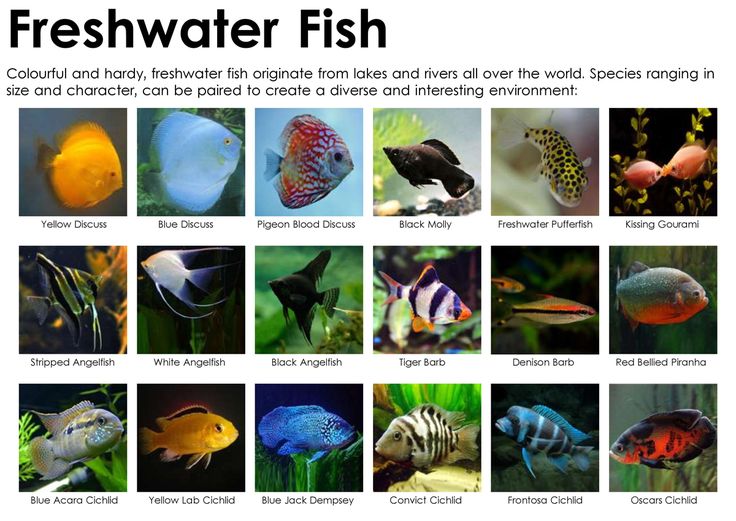
Keeping Goldfish
In this article you will find information about keeping goldfish as pets and how to prepare for your own goldfish tank.
Tips for Stocking Your Aquarium by Color
If you want a thriving, brightly colored aquarium then consider picking your freshwater fish by color.
Spotlight on the Wolf Cichlid
The wolf cichlid is a large, aggressive species but makes a perfect option for a show tank.
Cichlids - Understanding the Different Types
Have you ever considered adding a cichlid or two to your freshwater tank?
Can You Keep Other Fish With Your Betta?
The betta fish is an incredibly popular species that has a reputation for being aggressive.
The Best Barbs for a Large Home Aquarium
There are many different species of barbs but some of them are better than others for the larger home aquarium.
Algae Eaters for Freshwater Tanks
Are you looking for an easy way to help control algae in your tank?
What Every Aquarium Hobbyist Should Know About Livebearers
If you're looking for some low-maintenance fish to add to your freshwater tank, consider some livebearers.
Top Freshwater Aquarium Bullies
Some species of freshwater fish are simply more aggressive than others.
What Are Good Freshwater Fish For Beginners
What makes a freshwater fish a good candidate for beginners?
Freshwater Fish Article Database
Articles on dozens of different freshwater fish and appropriate care.
READ AQUARIUM ARTICLES
Aquarium News and Trends
( 40 articles )
General Aquarium Articles
( 19 articles )
Freshwater Aquarium Articles
( 133 articles )
Saltwater Aquarium Articles
( 94 articles )
Miscellaneous Aquarium Articles
( 10 articles )
Product Reviews (Freshwater)
( 4 articles )
Product Review (Saltwater)
( 1 articles )
species, care, maintenance, reproduction, compatibility, food, photo-review
Cichlomas - large and very beautiful representatives of the Cichlid family. Despite their large size and high aggressiveness of most species, the number of fans of these fish does not become less. In our article we will talk about the main aspects of their content.
Despite their large size and high aggressiveness of most species, the number of fans of these fish does not become less. In our article we will talk about the main aspects of their content.
Table of contents
General information
Cichlomas - historical the name of a group of fish in the Cichlid family. At one time, this genus included most representatives of the cichlids of Central America. After repeated revisions based on new scientific data, modern systematics abolished this genus, and the species included in it, were distributed according to other systematic groups. But the name is so firmly entrenched in certain types of fish that even in our time they are called cichlazoms in the old fashioned way.
Distinctive The features of cichlases are size, territoriality and high intelligence. Most of the species are real predators, which in natural conditions feed on small fish. Many of them are characterized by the manifestation of concern for offspring. And anyone who decides to encroach on the occupied territory (especially if we are talking about a nest) will be unquestioningly expelled. The maintenance of cichlase will require the presence of a large aquarium and the correct selection of neighbors, therefore novice aquarists are not advised to start cichlases as the first pets.
And anyone who decides to encroach on the occupied territory (especially if we are talking about a nest) will be unquestioningly expelled. The maintenance of cichlase will require the presence of a large aquarium and the correct selection of neighbors, therefore novice aquarists are not advised to start cichlases as the first pets.
Appearance
Considering various species of cichlases, it can be noted that most of them are relatively large, muscular fish with slender body proportions. Their body is high, compressed with sides. The mouth opening is large, the eyes are enlarged, black. The fins are well developed, elongated and pointed. Males of some species may there is a fat fold over the eyes.
The color of the fish is very diverse, many representatives have scales with a metallic sheen. Color scales, as well as the maximum size in the aquarium depends on the species and sexual accessories. The color may have alternating stripes, as well as bright luminous spots of different sizes, sometimes resembling the color of a jaguar. males cichlases are usually larger than females. The sizes of adult cichlases range from 10 to 40 see
males cichlases are usually larger than females. The sizes of adult cichlases range from 10 to 40 see
It should be noted that the scales of cichlases are very strong, real armor. It's not the last makes them extremely resilient. Such skin easily resists pathogenic microflora. Even the simplest it turns out to be too tough, therefore meet a common disease of aquarium fish - ichthyophthyriasis - in cichlase is possible only very rarely. A dense cover also helps a lot in skirmishes with relatives. Wounds received in fights heal right before our eyes.
History
It is not possible to track the history of the appearance of all types of cichlids in aquariums seems possible. But some facts are known about what types gained popularity with aquarists over time.
Oddly enough, the very first cichlazoma that got into the amateur aquarium, became cichlazoma chanchita. Although in our time to meet her in pet stores - great rarity.
Meek's cichlazoma became known to European aquarists in 1933 and quickly gained popularity. It is authentically known that the fish was brought to Russia by the People's Artist of the USSR and an avid amateur of the aquarium hobby Sergei Obraztsov. The black-striped cichlazoma became known a year later and remains the most popular cichlazoma at the moment.
It is authentically known that the fish was brought to Russia by the People's Artist of the USSR and an avid amateur of the aquarium hobby Sergei Obraztsov. The black-striped cichlazoma became known a year later and remains the most popular cichlazoma at the moment.
Most of the other species came to Europe in the 1940s, and to Russia in early 60s.
Habitat
Cichlomas have a very wide range of habitat - from the central states of the United States to Brazil. Their can be found in Mexico, Guatemala, Nicaragua, Honduras, Costa Rica and Panama. Due to the vast area of distribution, conditions contents of different species can vary significantly. The most common cichlomas prefer slowly flowing rivers, canals and ponds, densely overgrown vegetation. Cichlomas are kept in the middle and lower layers of water.
Cichlid species
Blackbanded cichlid
Small cichlid, the maximum size in the aquarium does not exceed 13-15 cm. Its name is a fish received for the characteristic black stripes across the body. Some are shaped Latin letters "V". The fins are elongated, transparent or yellowish. The females are brighter than the males and have a red abdomen or red spots on the sides of the body. For content recommended aquarium from 100 liters per couple, with plenty of hiding places due to the increased aggressiveness of the species. The fish is hardy and does not require creation special conditions of detention. Very easy to breed in community aquariums, often without any effort on the part of the aquarist. In the right conditions able to live up to 8-10 years.
Its name is a fish received for the characteristic black stripes across the body. Some are shaped Latin letters "V". The fins are elongated, transparent or yellowish. The females are brighter than the males and have a red abdomen or red spots on the sides of the body. For content recommended aquarium from 100 liters per couple, with plenty of hiding places due to the increased aggressiveness of the species. The fish is hardy and does not require creation special conditions of detention. Very easy to breed in community aquariums, often without any effort on the part of the aquarist. In the right conditions able to live up to 8-10 years.
Diamond cichlazoma
Large cichlazoma, native from Mexico. In nature, reaches a size of up to 30 cm, rarely in aquariums exceeds 20-25 cm. The body is dark brown with a lot of shimmering light blue or yellowish-green spots of various shapes. Therefore, the cichlid called diamond or pearl. The fins are elongated. From the middle of the body a series of black spots extend to the tail. Males are larger than females, have a characteristic fatty outgrowth on the forehead. The minimum size of the aquarium for maintenance is 200 liters. The fish is moderately aggressive, compatible with most species of large cichlids, but during the spawning period it can attack neighbors, protecting the nest. Life expectancy is about 10 years.
From the middle of the body a series of black spots extend to the tail. Males are larger than females, have a characteristic fatty outgrowth on the forehead. The minimum size of the aquarium for maintenance is 200 liters. The fish is moderately aggressive, compatible with most species of large cichlids, but during the spawning period it can attack neighbors, protecting the nest. Life expectancy is about 10 years.
Eliot Cichlazoma
Mexican Cichlazoma medium size, grows up to 15 cm in the aquarium. One of the most beautiful cichlase. The coloration is variegated, reminiscent of that of the ramiresi apistogram. Head - gray with stripes, belly and gill covers - rich scarlet with dark spots. The tail is blue. Scattered throughout the body are shimmering greenish spots. The dorsal fin has a red border. Males are larger females, differ in longer fins, during the spawning period their color becomes much brighter. For maintenance, the volume of the aquarium is required from 100 liters. Aggressiveness is average, compatible with many commensurate cichlomas, dangerous during spawning. Lives up to 10 years in captivity.
Aggressiveness is average, compatible with many commensurate cichlomas, dangerous during spawning. Lives up to 10 years in captivity.
Severum cichlazoma
Under natural conditions lives in northern South America. The average size in the aquarium is 20 cm. Body shape rounded, for which the fish is sometimes called the "false discus". The coloring differs depending on the variety. The most popular form is "Red pearls "- the body of the fish is yellow, with a lot of red spots. Size aquarium for a comfortable life should be at least 150 liters per couple. Intraspecific aggression is often observed, although to neighbors of other species are calm, excluding the spawning period. Juveniles are fed with special secretion from the epithelium. They can live in an aquarium for up to 15 years.
Severum cichlazomaMeeka cichlazoma
Currently lives throughout Central America. Medium sized fish growing up to 12-15 cm. It got its name in honor of the American ichthyologist, who compiled the first book on Mexican fish - Set Eugene Mika.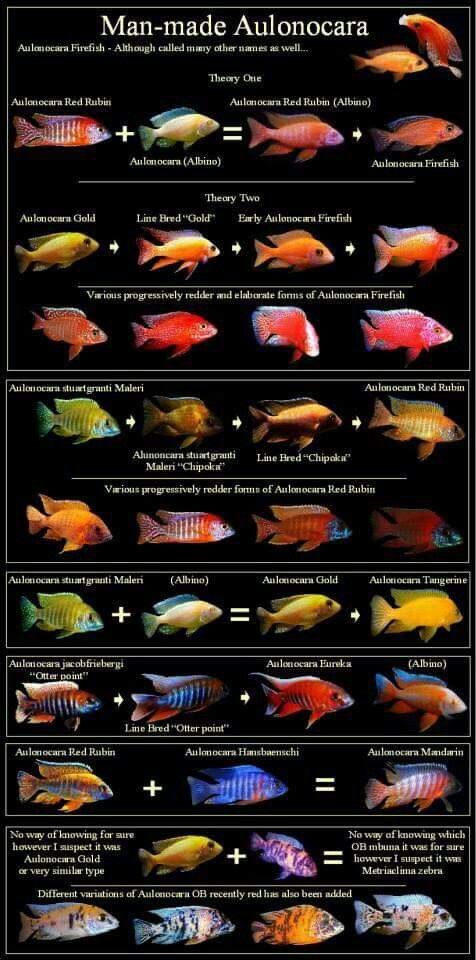 A distinctive feature of the species is the throat and gills, painted in bright scarlet. color. The body itself is gray, with purple tints and soft transverse dark stripes. Males are larger than females and have more pointed fins. For keeping a pair of Meek's cichlases requires an aquarium of 150 liters or more. Character calm, but during the spawning period they can cause injuries to swimmers in their territory strangers. They love to dig the soil in the aquarium. Characteristic pronounced concern about offspring. Life expectancy - up to 12 years.
A distinctive feature of the species is the throat and gills, painted in bright scarlet. color. The body itself is gray, with purple tints and soft transverse dark stripes. Males are larger than females and have more pointed fins. For keeping a pair of Meek's cichlases requires an aquarium of 150 liters or more. Character calm, but during the spawning period they can cause injuries to swimmers in their territory strangers. They love to dig the soil in the aquarium. Characteristic pronounced concern about offspring. Life expectancy - up to 12 years.
Flamingo cichlazoma
Origin of this fish is still a mystery. Some researchers believe that this albino form of black-striped cichlazoma. But usually albinos are not at all have pigments, while the flamingo cichlazoma has black eyes and a pink tint bodies, for which the species got its name. In an aquarium, fish can grow up to 8-15 cm. Males are larger than females, have a fatty growth on the forehead. Minimum volume aquarium for maintenance - 60 liters.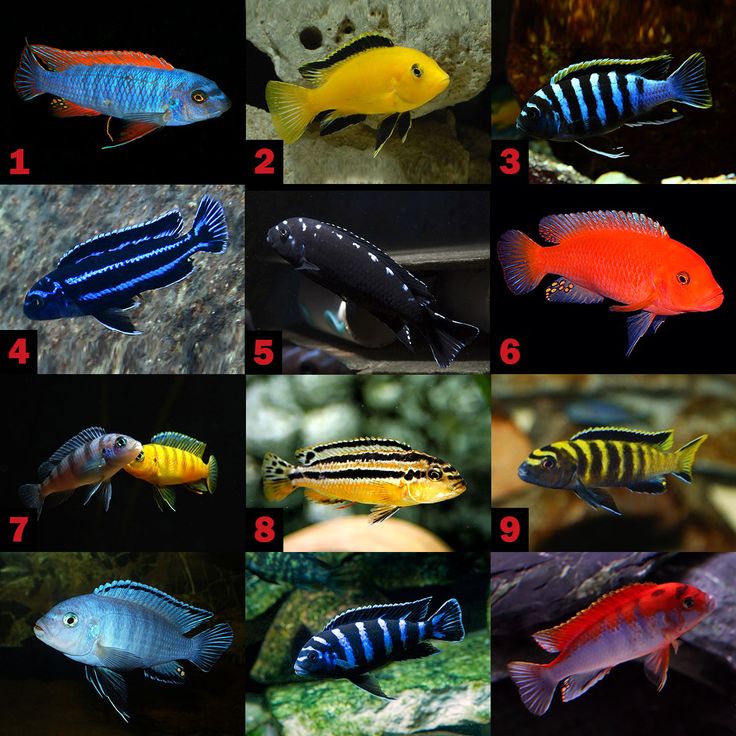 Aggressiveness is low, increases during spawning time.
Aggressiveness is low, increases during spawning time.
Managuan cichlazoma
Inhabits Central America. One of the largest cichlids kept in an aquarium. In nature reaches a size of 60 cm and a mass of a couple of kilograms. In the aquarium, the fish is more modest, usually no more than 40 cm. The second name of the species is cichlazoma jaguar. Such a name was assigned to a fish for body color, very reminiscent of the color of a wild cat: alternation of white and black spots, often with a bluish tint. in the middle the body has a longitudinal strip of large black spots. Males are bigger, brighter are colored and have more pointed fins. The fish is very large, aggressive, therefore not recommended for beginner aquarists. Minimum the volume of the aquarium is 450 liters. It is better to keep in a species aquarium, in view of increased aggressiveness. In a common aquarium, suitable neighbors will be commensurate cichlids and catfish (clarius, brocade, red-tailed). With due care able to live up to 15 years.
Nicaraguan cichlazoma
Maintains own origin from Lake Nicaragua in Central America. Maximum size in an aquarium - 25 cm. The shape of the body is unusual: the line of the mouth and forehead can be almost vertical. The fish is stocky, strong, the mouth is located below heads. The main thing that attracts attention in this fish is an interesting body color. adults. The head, back and dorsal fin are blue in color, the abdomen yellow. In the center of the body from the gill covers to the tail runs a wide black band. The fins are transparent, some have black dots. Young individuals painted very modestly, probably because of this, the fish did not receive a wide distribution. Despite its size, the Nicaraguan cichlazoma is not is characterized by aggressiveness, excluding the period of nest building and spawning. For growing a pair of fish will need an aquarium with a volume of at least 300 liters. IN Under suitable conditions, the fish lives up to 15 years in an aquarium.
Great variety cichlases and their wide distribution imposes certain restrictions on keeping fish. First of all, you need to choose the right volume of the aquarium. Some species will need 60 liters, others need at least 450 liters. A powerful filter must be installed in the aquarium (best external) and a good compressor for high-quality aeration. The flow should not be very powerful. Rounded pebbles and large sand. It should be borne in mind that most types of cichlases are lovers dig up the soil, so any decorations installed in the aquarium should be firmly fixed. Look good in an aquarium with cichlazoma large stones and natural driftwood. Bright lighting is needed, it will allow full as much as you can enjoy the iridescent colors of these beautiful fish. For supporting temperature in the aquarium requires a thermostat of suitable power.
Cichlazoma severum in an aquarium with live plants Optimal parameters waters for different species may differ, but you can stick to average values: T=22-28°С, pH= 6-8, GH = 2-20. Weekly water changes up to 30% are required.
Weekly water changes up to 30% are required.
Most plant species are incompatible with cichlids - they will either be eaten or dug up.
It is best to pay attention to hard-leaved species (anubias) and, if possible, fix them in special pots or surround them with large stones.
Behavioral characteristics of cichlases
For cichlases, as for many species of cichlids are characterized by a number of behavioral features:
- Territoriality. A pair of cichlases necessarily chooses a place for their subsequent spawning, while driving away anyone who invades their possessions. Therefore, it is very important to zone the aquarium with decorations so that each fish can safely own its own piece of territory.
- Predation. Most of the cichlases are active predators that feed on small fish. This must be taken into account when selecting neighbors in a common aquarium and choosing food.
- High intelligence. The predatory lifestyle led to the development of intelligence by cichlases.
 They are able to recognize the owner and even occasionally allow themselves to be stroked. If a stranger approaches the aquarium, the fish prefer to retreat and hide.
They are able to recognize the owner and even occasionally allow themselves to be stroked. If a stranger approaches the aquarium, the fish prefer to retreat and hide. - Monogamy. Pairs of cichlases are very strong and remain for life. Even after the death of one of the partners, the survivor often simply does not allow or kills new individuals.
- Caring for offspring. Cichlases have a very developed parental instinct. The male and female take care of the offspring from the moment of spawning and until the fry reach the age of 1.5-2 months. With the joint spawning of several pairs in Meek's cichlases, one can observe how parents indiscriminately divide a group of fry among themselves and care for the offspring of their competitors.
When choosing neighbors in a common aquarium, it is necessary to take into account the fact that all cichlazoma are extremely territorial fish. Having chosen one of the sections of the aquarium, they will not tolerate alien invasions.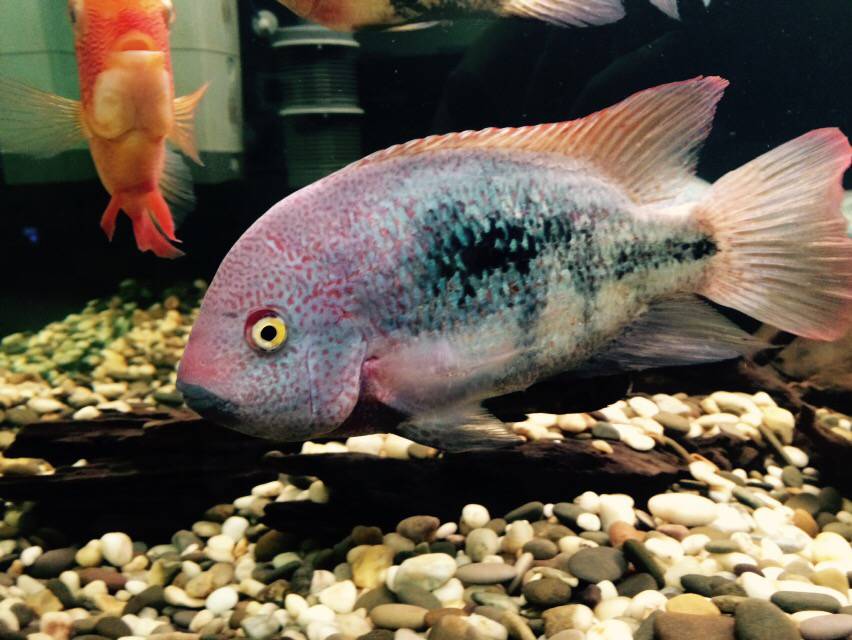 But if in a normal period of life the maximum that a neighbor gets, swum into someone else's territory - this is a small poke in the side, then during the period nest building and spawning, many species of cichlases become so aggressive that they can even kill any fish that got into its reach.
But if in a normal period of life the maximum that a neighbor gets, swum into someone else's territory - this is a small poke in the side, then during the period nest building and spawning, many species of cichlases become so aggressive that they can even kill any fish that got into its reach.
When containing several species of fish should not be forgotten about the appropriate volume of the aquarium. Many cichlomas a volume of 150 liters per pair is required, and taking into account other neighbors, this figure may increase several times.
Choosing roommates it is necessary, first of all, to focus on the size of the fish. Preferably if all individuals will be proportionate, otherwise smaller species are endangered. It has been noted that if fish of different species live in an aquarium while still fry, then the general aggression when they reach adult size is significantly less. IN the aquarium needs to provide enough hiding places so that the fish can hide from each other. If one of the species has spawned, then the neighbors are better for a while transfer to another aquarium. Cichlase is recommended to be kept in pairs or groups with a predominance of females. Some species (for example, Managuan cichlazoma) are better keep in species aquariums.
If one of the species has spawned, then the neighbors are better for a while transfer to another aquarium. Cichlase is recommended to be kept in pairs or groups with a predominance of females. Some species (for example, Managuan cichlazoma) are better keep in species aquariums.
In most cases, in neighbors to cichlids choose related species or other large cichlids - this there can be both American species and African ones, the main thing is not to forget that that their optimal water parameters may differ. For large catfish (pterygoplichts, red-tails, clariuses) cichlazomas often do not address any attention, so they can safely be settled together. Accordingly, small peaceful fish species are completely unsuitable for keeping together with cichlazoma, early or later they will become live food for voracious predators.
Feeding cichlase
Most species cichlases are active and aggressive predators whose natural diet includes live fish (70%) and vegetation (30%). Fish are picky eaters, so well eat any kind of food. Often it can be live fish, homemade minced meat and even baby rodents (naked). Unfortunately, these foods can hardly be called balanced, and often they simply cannot satisfy all nutritional needs of cichlase, and can also often lead to rapid water pollution in the aquarium.
Fish are picky eaters, so well eat any kind of food. Often it can be live fish, homemade minced meat and even baby rodents (naked). Unfortunately, these foods can hardly be called balanced, and often they simply cannot satisfy all nutritional needs of cichlase, and can also often lead to rapid water pollution in the aquarium.
Specific feeding characteristics of cichlases: large size of most species, need for a high protein content, periodic addition of a plant component.
Tetra Cichlid offers a wide range of foods for all types of cichlids and other cichlids. Tetra food is fully balanced, highly digestible and contains a complex of supporting additives for good health, full growth and development of fish. Do not forget that cichlazomas should regularly receive vegetable top dressing, food with spirulina algae, for example, TetraPro Algae, is well suited for this.
Feed cichlids it is necessary several times a day with such a portion of food that will be eaten fish in a few minutes.
Propagation and breeding
Propagation by cichlase in conditions of the aquarium - the phenomenon is mostly spontaneous, not requiring any effort on the part of the aquarist. To do this, it is enough to have a formed a couple of fish and a suitable place. In most species, pairs form for life. Cichlasomes are substratophiles, that is, they prefer to lay caviar on wide flat stones lying at the bottom. Therefore, the presence of such decorations you need to worry in advance. If there are no suitable stones, then the fish can dig up the soil to the glass and lay eggs on it.
Male and female Cichlazoma Sedzhika During spawning the aggressiveness of the fish increases many times, so ideally it is necessary to remove other fish until the pair of cichlases are done with spawning and raising offspring. The parental instinct is very developed in these fish, they guard the eggs, create a current of water with the help of fins, remove dead eggs. After hatching and up to the age of 1. 5-2 months, the fry are supervised parents.
5-2 months, the fry are supervised parents.
Spawning stimulus is to change the water and raise the temperature. At one time, the female can brush aside from 100 to 1000 eggs. After spawning, do not disturb producers worth it, in a bad scenario, the caviar will be eaten. The fry appear in 2-4 days. At this time, it is necessary to carefully monitor the parents, because the male, guarding offspring, may begin to kill the female. Fry can be fed with TetraMin Baby dry food. As the fish grow, they must be sorted and planted in spacious aquariums.
keeping and breeding, feeding, compatibility
Aquarium cichlids are popular with many fish breeders. They have been known for a very long time, and breeders have created a huge number of amazingly beautiful color variations of each species.
A number of breeds have an unusual appearance: they include angelfish and discus, adapted to life in overgrown water bodies.
Many cichlids in the aquarium impress with their "reasonable" behavior: tilapia fish and cichlazoma, for example, touchingly care for their offspring.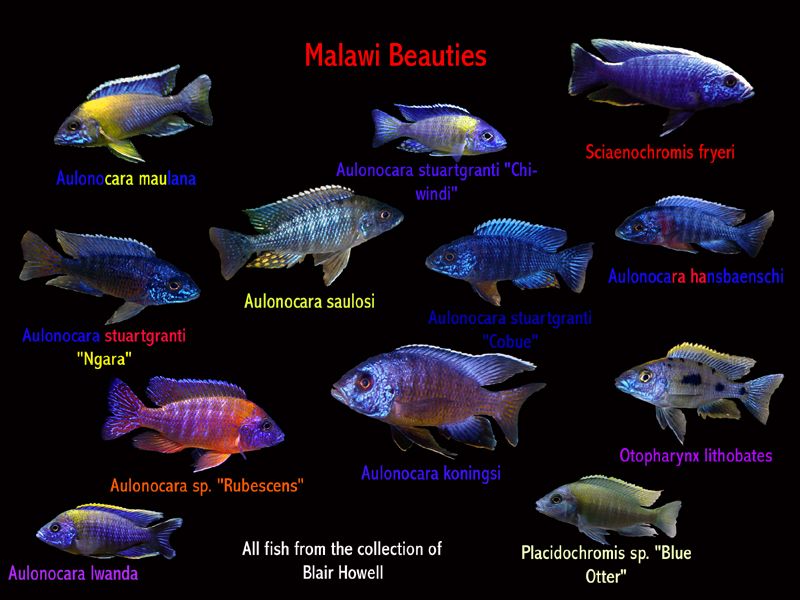
Keeping a pet that does not get along with others is quite difficult even for experienced aquarists, so cichlids are not suitable for beginners.
Only popular breeds of angelfish, haplochromis, parrots can be an exception. Most of the species are recommended for those who have already mastered the aquarium business and gained experience in caring for the reservoir and its inhabitants.
Africa or America: where do cichlids live?
In order not to get confused in the complex taxonomy of all aquarium cichlids, hobbyists subdivide them according to their habitat. Some species live in the Eastern Hemisphere, spreading through the waters of Asia and Africa. In everyday life they are called African.
Varieties of cichlids
There is a wide variety of cichlid species
Cichlid species living in lakes Victoria, Tanganyika, Malawi, etc., located in the African highlands, prefer hard water with a pronounced alkaline reaction. They occupy almost all habitat areas in their native lakes.
They occupy almost all habitat areas in their native lakes.
There are fish that live and feed in the bottom layers of water: their mouth is most often located so that it is convenient to collect food from the ground. This is especially noticeable in parrots, erethmodus, pseudotropheus, etc. In the inhabitants of the water column (middle and upper layers), the mouth apparatus is located in the upper part of the snout and allows them to feed from the surface.
American cichlids live in slow-flowing rivers, where aquatic plants occupy almost the entire space. In most species, because of this, the body has a flattened shape. Such are scalars and discus, severums, acaras, astronotuses. They feed more often and live in the lower and middle layers, in nature collecting the remains that have sunk to the bottom.
In their native rivers, the water is literally infused with leaves and branches that have fallen into it. It is acidic and very soft.
Despite the similar water temperatures for tropical fish from Africa and America, they cannot be kept together.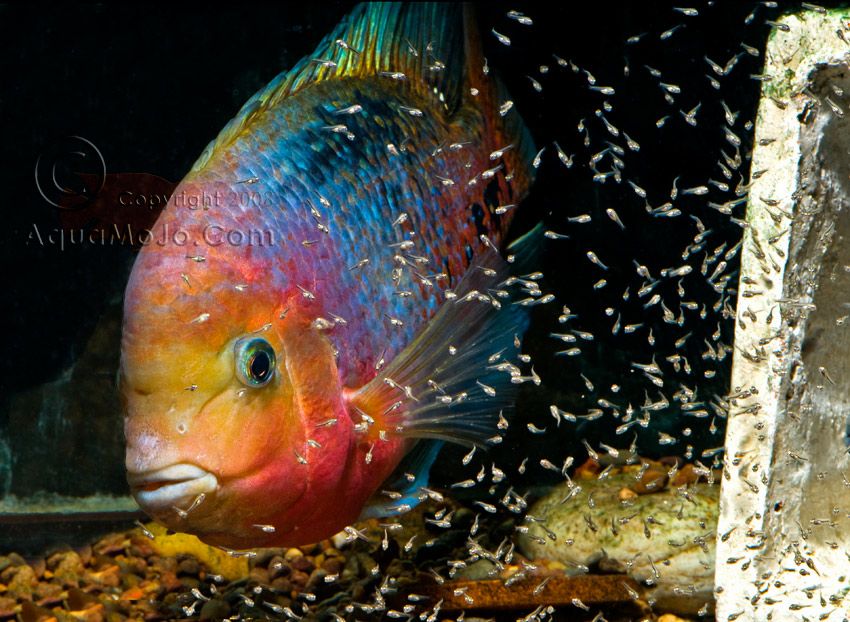 Due to the difference in water parameters, cichlids, whose compatibility is already quite difficult, will not get along well in the vicinity of relatives from another hemisphere. Therefore, when planning to acquire a representative of cichlids, you should ask what conditions of detention suit her.
Due to the difference in water parameters, cichlids, whose compatibility is already quite difficult, will not get along well in the vicinity of relatives from another hemisphere. Therefore, when planning to acquire a representative of cichlids, you should ask what conditions of detention suit her.
Keeping cichlids
Fish must be kept strictly in warm water
Having understood whether the fish belong to species that live in soft and acidic or hard and alkaline water, the aquarist can confidently select neighbors who will get along in the same microclimate. The description of aquarium pets always includes their requirements.
Aquarium fish cichlids, in addition to the chemical parameters of water, are also sensitive to such factors as the temperature in the aquarium. The vast majority of cichlid species prefer to live in warm water (+24…+27ºС).
Some can tolerate even lower temperatures (about +20ºС), but this is not a comfortable condition for them.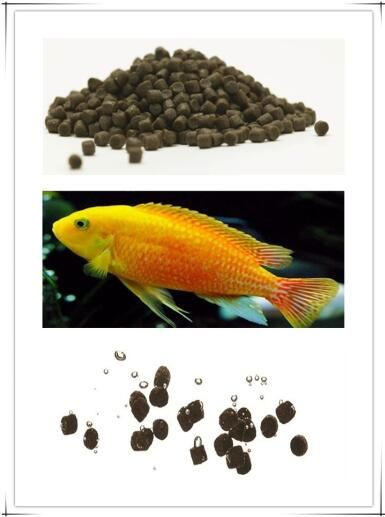 Therefore, it is quite possible to keep 2-3 species of American cichlids in one pond, for example, by setting a temperature for them that is close to ideal.
Therefore, it is quite possible to keep 2-3 species of American cichlids in one pond, for example, by setting a temperature for them that is close to ideal.
Compatibility of cichlids with other fish
Do not put other species of fish with cichlids - they will not do well
Another factor affecting the compatibility of cichlids is their aggressiveness. Most herbivorous and omnivorous representatives show their dislike for fish of other species.
This is due to the fact that natural water bodies allow each pair to secure a feeding territory. In some representatives of cichlid fish, it is quite large and, in conditions of limited space, the aquarium can occupy the entire aquarium. Neighborhood with such creatures will be problematic for any other species, since they cannot even leave the territory guarded by a not particularly accommodating couple.
There are a number of predatory species that do not get along with any neighbor. Usually these are kept in pairs, such as astronotus, severums, parrots, princesses, altoamprologus, etc. In this case, the aquarist will be forced to come to terms with the monotony for as long as cichlids live - up to 10 years.
Some representatives (angelfish, haplochromis, xenotilapia, cyprichromis, discus, etc.) can get along well with other fish that are able to dodge when attacked. They need to pick up small flocking aquatic inhabitants who live in another zone of the aquarium as neighbors. Usually these are the inhabitants of the upper layers: neons, tetras, rasboras, danios or barbs.
Some species of cichlids (black-striped and meeka cichlids, acaras, etropluses, etc.) do not get along only with representatives of their own breed, competing for a female and territory for spawning and feeding.
They get along well with most smaller fish that are not like themselves. The neighborhood will be very successful if their habitats are different: bottom cichlazomes or acars rarely visit the upper layers of the water, in which guppies and mollies can live, as well as many schooling species with whom they are quite capable of getting along.
Feeding cichlids
Bloodworms and Coretra
Feeding cichlids is not unusual. Most species of cichlids in an aquarium are omnivorous fish and eat any kind of food. During the time of keeping and breeding in artificial conditions, they have completely adapted to mixtures of industrial production, and to the compositions that aquarists treat fish to so that they multiply and can live longer.
It is advisable to use complex feeds containing various elements (proteins, fiber, vitamins, etc.). This will help the fish get everything they need in the right quantities. If the breeder does not yet have sufficient experience, lacks knowledge about the habitat and feeding possibilities of fish in natural conditions, the best way to feed cichlids is precisely ready-made mixtures (flakes, granules) of good quality.
It is not recommended to feed fish with dry food containing one kind of dried crustaceans (daphnia, gammarus, brine shrimp, etc.). Such a diet is not complete and does not provide them with the necessary nutrients. The same applies to the constant presence in the diet of only one type of live food.
Such a diet is not complete and does not provide them with the necessary nutrients. The same applies to the constant presence in the diet of only one type of live food.
The best food for cichlids is a variety of live foods (bloodworms, coretra, earthworms, ant eggs, etc.). It is often necessary to include in the diet and vegetable feed: greens and raw vegetables. In winter, when it is difficult to get live worms, frozen briquettes from these same creatures are used in the aquarium hobby. All useful substances are stored in them.
Good food for cichlids is meat and fish. These products are used in raw or boiled (without salt) form. It is most convenient to freeze the raw product a little, and then scrape off medium-sized flakes with a sharp knife. The size of the pieces depends on the size of the pet. It is advisable not to use raw pond fish for feeding: they may have diseases and parasites that can also infect aquarium cichlids.
Cichlid breeding
Cichlid breeding occurs by spawning, from which small larvae are then hatched. Growing up, they acquire the name of fry and begin to swim independently.
Growing up, they acquire the name of fry and begin to swim independently.
The difference in the stages of development lies in the fact that the larva is not able to actively feed and lives off the contents of the yolk sac, while the swimming fry are already in dire need of food.
How the parent cichlids are fed affects the general condition of their cubs. The content of various kinds of nutrients in the caviar should be large enough to ensure the growth of the offspring until the moment when it begins to feed itself. Therefore, the only thing an aquarist can do to help his pets breed is to feed them properly.
Otherwise, the pets breed and take care of the fry themselves. Cichlids, depending on the species, can dig nest holes in the ground, hatch eggs in the mouth, and stick them to plant leaves. Watching cichlids at the time of spawning and nursing offspring is a very interesting experience.
For example, cichlazoma and tilapia begin to collect eggs after spawning. It looks like a fish is eating them. But you should not worry: after a few days, you can notice how many fry come out of the mouth of a large fish. If at this moment the pets are disturbed, they will again collect the young, “swallowing” it.
It looks like a fish is eating them. But you should not worry: after a few days, you can notice how many fry come out of the mouth of a large fish. If at this moment the pets are disturbed, they will again collect the young, “swallowing” it.
Angelfish and discus glue their eggs to plant leaves. All the time of incubation, the parents aggressively guard the clutch, constantly fanning it with their fins. They are little interested in growing fry, and they grow on their own.
Some species (apistogramma, geophagus demon, etc.) dig holes for spawning or use natural shelters. Eggs can lay immediately in the "nest" or transfer them there, collecting from the surface of the soil around. After that, during the entire time of incubation, the parents will protect the masonry and fry, which hide in the nest for some time in case of danger.
The incubation period lasts for 1-3 days. In some cases, an increased water temperature in an aquarium with cichlids (up to +30ºС) is recommended so that the eggs ripen faster.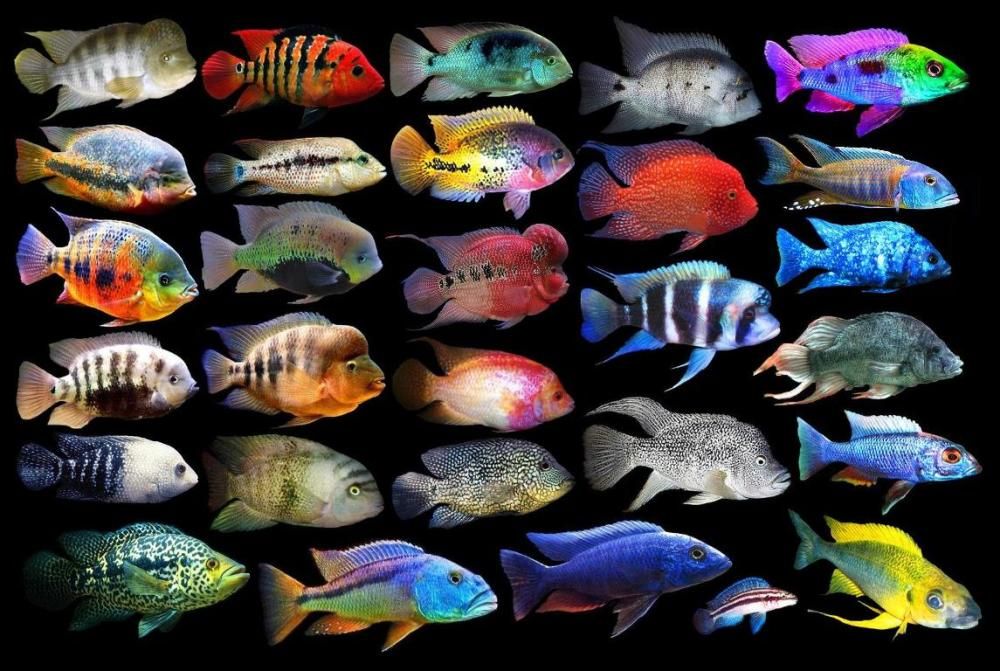 But this can only be done if the couple is in a spawning tank or lives without neighbors.
But this can only be done if the couple is in a spawning tank or lives without neighbors.
This is usually done if breeding at moderate temperatures is difficult due to mold development or if the breeder is trying to breed a rare fish. In this case, the larvae appear already within 24 hours after spawning. As the temperature rises, aeration must also be increased.
What and how to feed young cichlids
Artemia and ciliates are the best food for fry
Larvae that have hatched from eggs do not feed on their own. While the juveniles lie in a bunch on a leaf, stone or in a hole, you do not need to try to feed them with anything.
But during these 3-4 days you need to have time to take care of the fodder for the young animals when they start to swim.
The best food for cichlid fry is live food.
There are several traditional types of feeding:
- ciliates, rotifers and other protozoa constitute "living dust" or zooplankton;
- brine shrimp nauplii - can be independently hatched from eggs;
- ready-made professional feeds (concentrates).
Zooplankton is found in large numbers in shallow natural reservoirs with well-heated water. The largest representatives - cyclops and daphnia, can be seen with the naked eye, these are small dots of a light shade in clear water. You need to catch them with a net with a fine mesh, making several movements in the form of a figure eight and rinsing the net in a prepared jar of water. This method is very risky, as parasites can enter the aquarium in this way.
You can grow ciliates by placing a banana peel or some hay in water from a natural reservoir. But this process must be started a few days before the expected spawning, since the growth of food also takes time. When taking water from open reservoirs, there is a risk of introducing an infection into a home aquarium.
When taking water from open reservoirs, there is a risk of introducing an infection into a home aquarium.
Nauplii are microscopic crustaceans. Pet stores sell their eggs, which look like creamy semolina. It takes about 3 days to hatch the crustaceans. For hatching, you need to place the eggs in warm water (+ 32ºС). Ready food should be added to the aquarium with fry about 1 time in 3 hours, regardless of the time of day.
Ready mixes (Micromin or others) are very convenient for feeding. When purchasing them, you need to pay attention to the packaging, which should indicate that the food is intended specifically for fry.
Interestingly, some cichlids, especially large ones, take care of their offspring by feeding the young. Discus even secrete a special secret on the scales, which the fry feed on in the first few days of life. In the intervals between the periods of spawning and nursing of babies, this substance is not produced. Herbivorous species, collecting algae, chew them, grinding them to the desired fractions, and then spit out fine food into a flock of fry.
Rearing of young cichlids
In order to be sure to keep a larger number of fry, the pair is placed in a separate incubator before spawning. This is especially true if the aquarium is shared.
In addition to the fact that it is easier to maintain the necessary conditions in a spawning tank, breeding cichlids has its own risks:
- A young couple may start eating eggs immediately after spawning. If the fish do this more than once, it is best to remove them from the incubator immediately after spawning. You can do otherwise and let them spawn in a common pond, taking only the substrate with caviar (leaf, stone or other). In this case, the breeder will have to aerate the masonry and monitor the temperature in the hatcher.
- Even in spawning grounds, most cichlids eat eggs in the dark. This can be avoided by providing them with dim diffused light during the entire incubation.
- Growing young can eat each other. To avoid this, it is recommended to transplant the fry into a larger container as they grow up.





:max_bytes(150000):strip_icc()/what-can-i-eat-if-i-have-a-peptic-ulcer-1742154-01-ec37a34d14c44195999f8d44372f820b.png?resize=1060%2C707&ssl=1)





